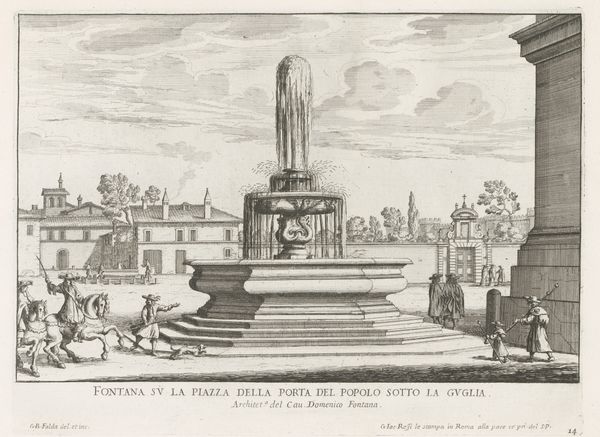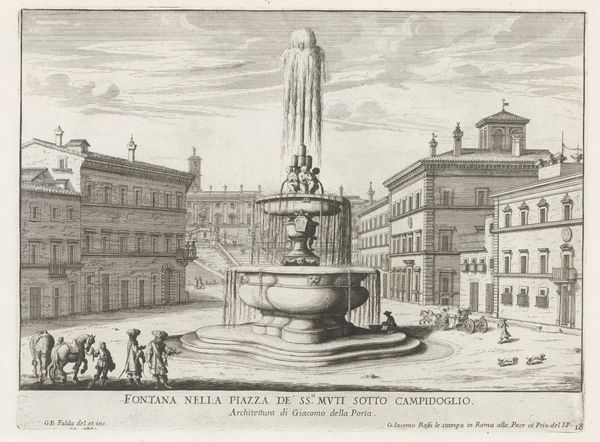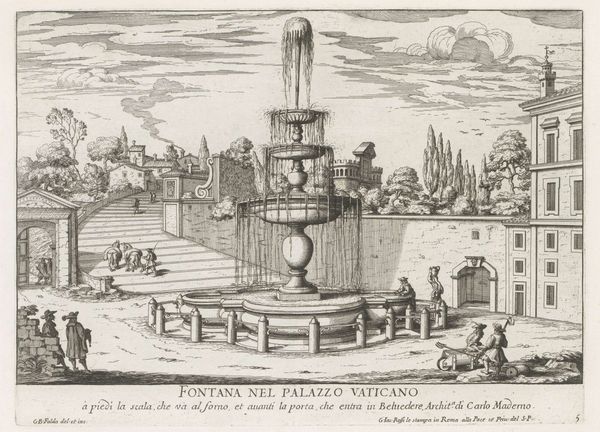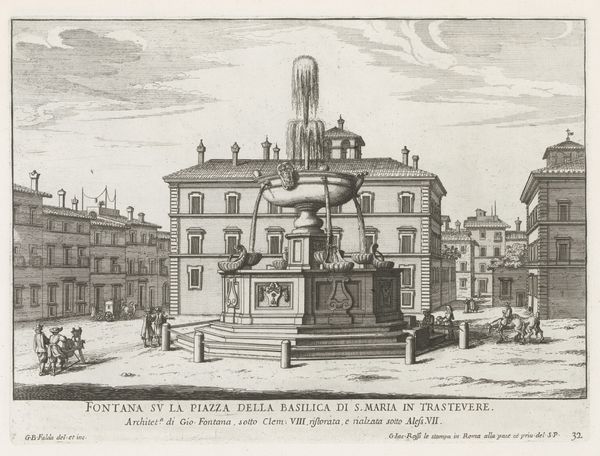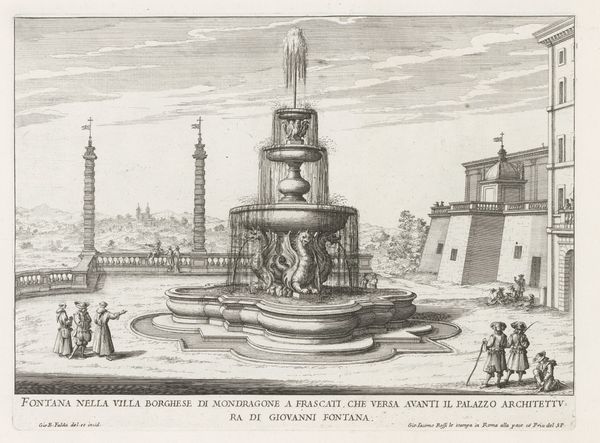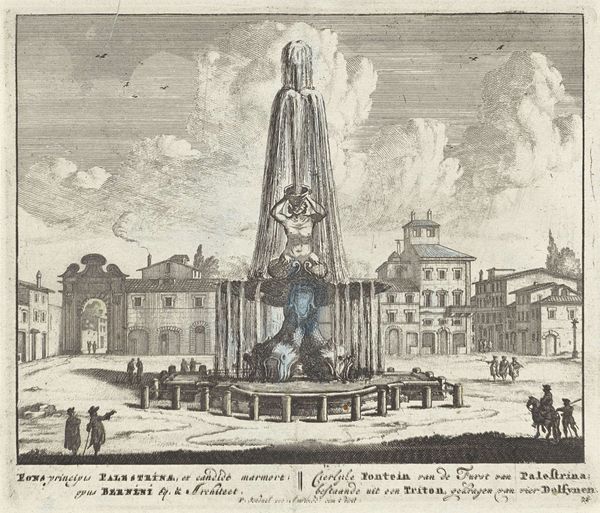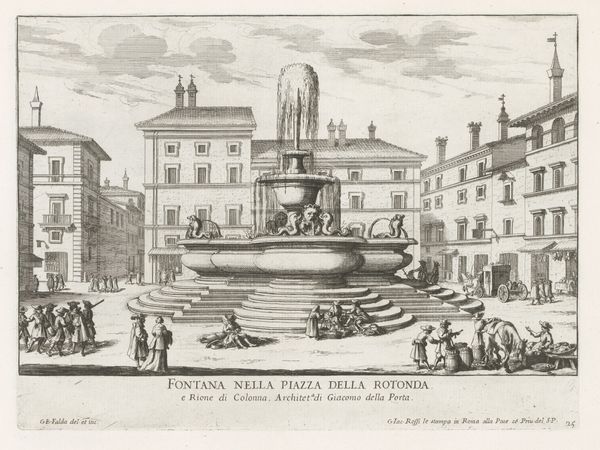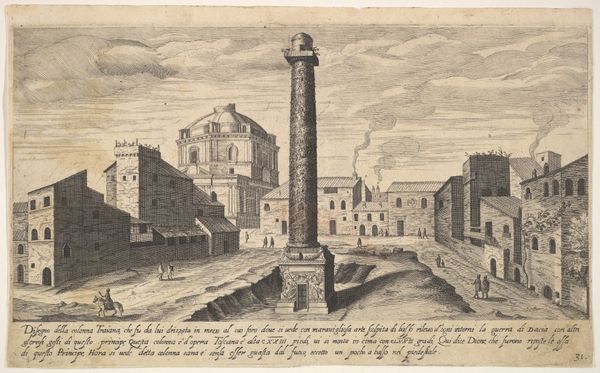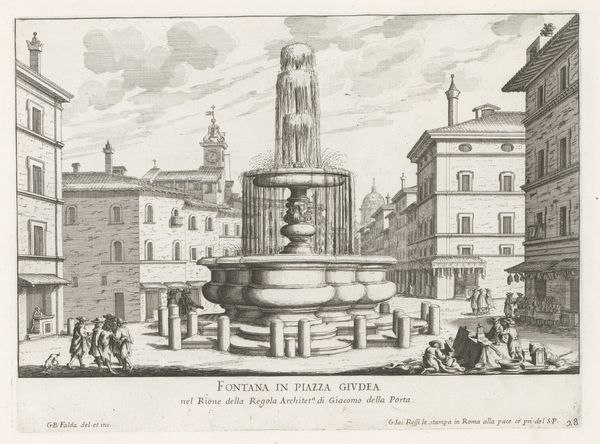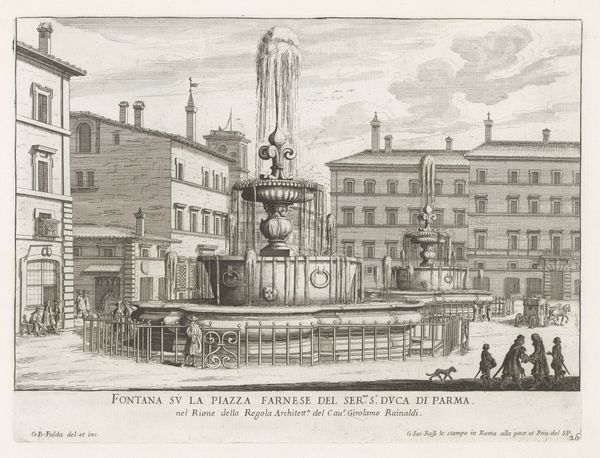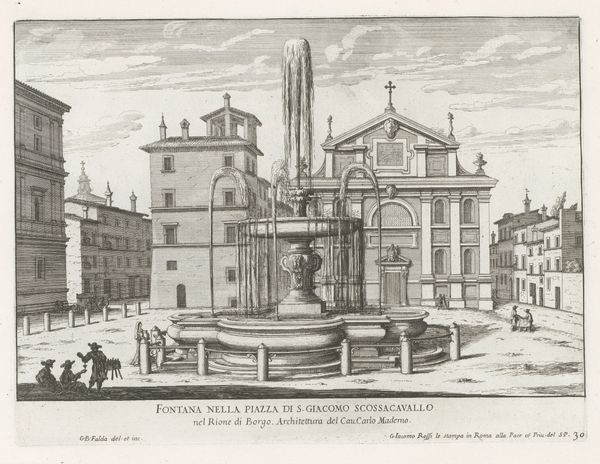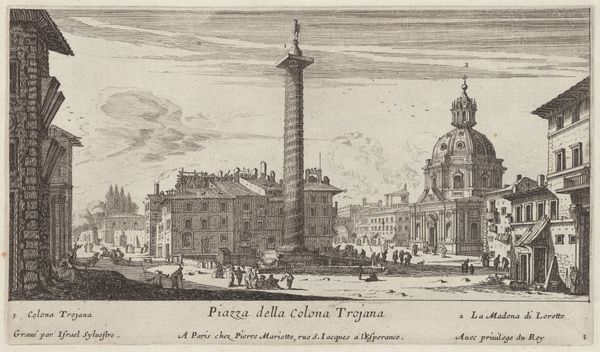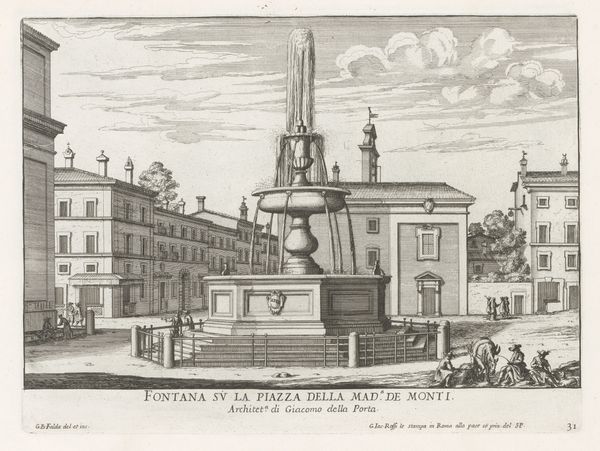
print, engraving, architecture
#
baroque
# print
#
old engraving style
#
cityscape
#
engraving
#
architecture
Dimensions: height 220 mm, width 296 mm
Copyright: Rijks Museum: Open Domain
Curator: The "Fountain on Piazza del Quirinale in Rome" by Giovanni Battista Falda, made between 1653 and 1691. This engraving presents a striking cityscape, dominated by the magnificent fountain. What captures your eye initially? Editor: The way that dense cylindrical burst of water contrasts with the sharp architecture feels almost violent! The baroque era really was fond of its extreme juxtapositions. The crisp detail makes the rest of the vista so calming too; those small figures at the bottom left and those strolling mid-frame almost fade into irrelevance to highlight its opulence. Curator: That tension between calm observation and extravagance of design is quite insightful. We have to consider the print medium itself and the processes required. Each line etched meticulously, the economics of its production... were these prints destined for wealthy patrons celebrating the power of Rome? The labour to produce even such seemingly ephemeral artworks represents a social investment, shaping and reifying dominant societal forces, particularly that of the papacy in this case. Editor: Exactly. Because that's what the baroque aimed to accomplish, really. With this specific piece of art you’re viewing papal dominance, that control being enacted not just religiously, but artistically through public architecture that literally uses the landscape of Rome to solidify its presence. The composition, those stark lines you pointed out… everything seems to serve the Church’s own brand image. Curator: And we see Domenico Fontana's architecture foregrounded there – not merely an objective view but a calculated promotion by both architect and artist to reinforce those connections within networks of power. Editor: A promotional tool; I hadn’t quite considered it that way. But how else does an artisan secure status back then? These urban scenes helped disseminate very clear social messages about authority and prestige. The artist doesn’t just observe the Piazza, they curate how its perceived – for the Church, for those in power, and indeed those seeing this at the time. Curator: So, beyond simply recording the Fountain, the print also recreates an invitation. It's tempting for viewers of the day, isn’t it? A vicarious interaction which served social cohesion. Editor: The beauty lies not just in the physical structures presented but the encoded messaging—who could be involved and the influence they commanded. A truly revealing lens onto 17th-century socio-political dynamics.
Comments
No comments
Be the first to comment and join the conversation on the ultimate creative platform.
